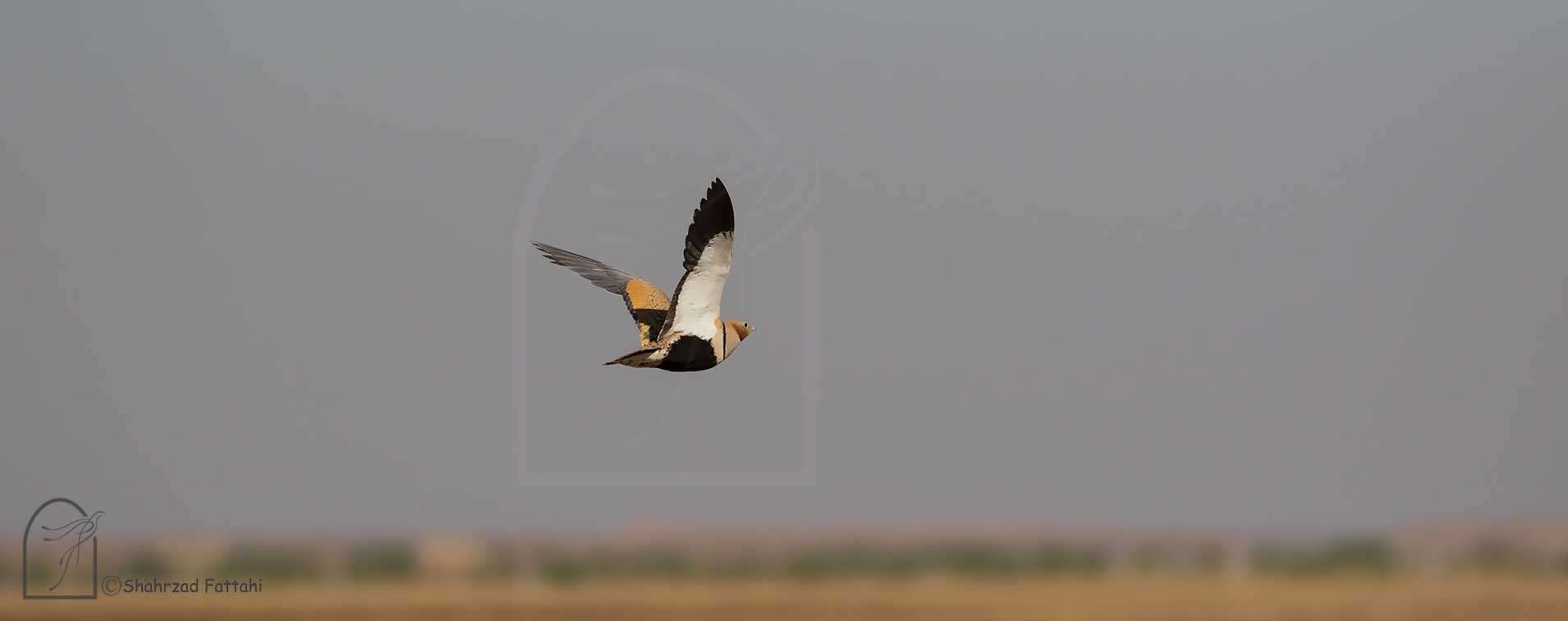
Black-bellied Sandgrouse (Pterocles orientalis)
Black-bellied Sandgrouse
The black-bellied sandgrouse is 33–39 cm. The male has a grey head, neck, and breast. The underparts are black and the upperparts are golden-brown with darker markings. There is a thin black border around the lower breast and a chestnut throat patch.
The female has browner, more finely marked upperparts, including the head and the breast. The underparts and breast band are identical to the male. Black-bellied Sandgrouse
The Black-bellied Sandgrouse breeds on dry open plains and similar habitats, but it avoids areas completely lacking in vegetation. Its nest is a ground scrape into which three greenish eggs with cryptic markings are laid. Both sexes incubate, but only the male brings water and they travel long distances to reach the water.
This bird lives in semi-desert areas with rocky terrain and makes nests on the ground. It is native and relatively abundant in Iran.
This species has an extremely large range in the sandgrouse family. However, the population is suspected to be in decline owing to ongoing habitat destruction and hunting pressure. In Europe declines have been very rapid, however, this only represents 15 % of the global range, and trends in Asia and North Africa are more difficult to determine. It remains classified as Least Concern because the overall rate of decline is not yet suspected to be moderately rapid, however, better information from across the range could lead to its uplisting to a higher category of threat in the near future.
Sandgrouse is extremely shy, cautious, and liable to spook if they feel at all threatened. Coupled to this of course they have amazing camouflage and this makes them incredibly difficult to find or obtain good views.
In flight they are distinctive having a deep bellied appearance, usually in pairs or in a small group, straight and level with a fast purposeful wing-beat. Their proximity is often known from their burbling call which carries long distances but whose direction is difficult to pinpoint. They prefer short grass bordered with ploughed land.
Source:
https://www.birding-in-portugal.com/sandgrouse/black-bellied-sandgrouse-pterocles-orientalis
